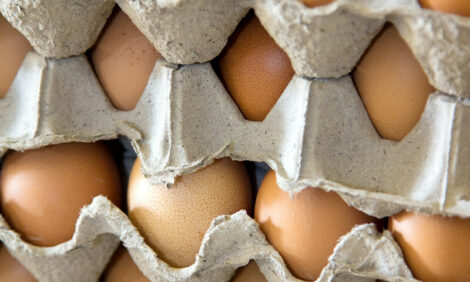



WVPAC 2015: Veterinarians Embrace Animal Welfare
SOUTH AFRICA - Conference delegates were told that with consumers becoming increasingly concerned over the welfare of animals, veterinarians will have to play a bigger role as the protectors of animals, reports Glenneis Kriel.Otherwise, this 'protector' role will be stolen by groups that might be less informed than us, Dr Stephen Lister from Crowshall Veterinary Services in the UK cautioned delegates at the Congress of the World Veterinary Poultry Association (WVPAC 2015) in Cape Town, South Africa.
“Looking after the welfare of animals has been a historical part of a veterinary’s role, but most of us moved from the premise that a good performing animal is experiencing positive welfare.
"With rising concern over animal welfare, the way in which we deal with animal welfare however needs to change,” Dr Lister said.
He therefore proposed that veterinary training should have a stronger focus on ethics and the legal aspects of animal welfare to better equip veterinarians for this task.
According to him, one of the biggest challenges with animal welfare is that it is often pushed by consumers that don’t know much about production. “Consumers are very confused about their food and this is causing confusion for producers,” Dr Lister said.
For example, the majority of British consumers who took part in a study by the Institute of Global Distribution (IGD) in 2011, were surprised that mortality in broiler sheds were less than 5 per cent. They thought it was closer to 30 per cent to 40 per cent. Most of them were also against beak trimming, even though this was no longer a practice in the UK.
Educating consumers will not only help consumers to become more sympathetic towards the industry, but give them a better understanding of the cost implications of certain production changes.
“Improving the welfare of animals, obviously doesn’t necessarily result in higher production costs, but having to lower stocking rates will have a definitive impact on farming efficiency and production costs and studies have shown many times that most producers aren’t willing to pay a premium for this,” Dr Lister said.
He added that it will become a growing challenge to supply the world with enough meat, as world population is expected to grow by 34 per cent to over 9 billion people by 2015.
Producers in effect would have to double production over this time to meat the rising demand for food. And this has to be done on the same amount of land.
Another challenge with the concept of animal welfare is the way in which welfare is measured. Dr Lister explained that a wild animal is not necessarily better off than an animal that is kept in captivity, but has enough to eat and drink and is protected from the animals.
The same applies to the idea of free-range. “Who will decide on whether it is better to keep animals in a clean protected environment or outside ranging freely where they are more exposed?” he asked.
Dr Lister said the industry would have to create standards to boost consumer confidence and find ways to measure welfare outcomes. He referred to two examples of studies that were trying to measure welfare.
In the first, feather cover of chicks and antagonistic behaviour was measured, the idea being that good feather indicated a positive welfare outcome. This study also sparked the question of whether feather loss was more important than beak trimming.
In the second example the number of broilers sent for processing and the reason for rejection is analysed.
He said the industry had to embrace technology to become more transparent, and create Farm Assurance Schemes that would boost consumer confidence: “We need to communicate that we are indeed looking after our animals and that we are not trying to cover ourselves up, as has been suggested in the past, with our strict biosecurity regulations.”







